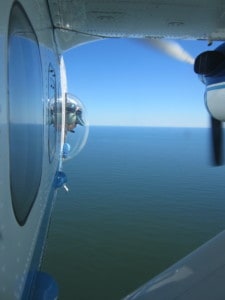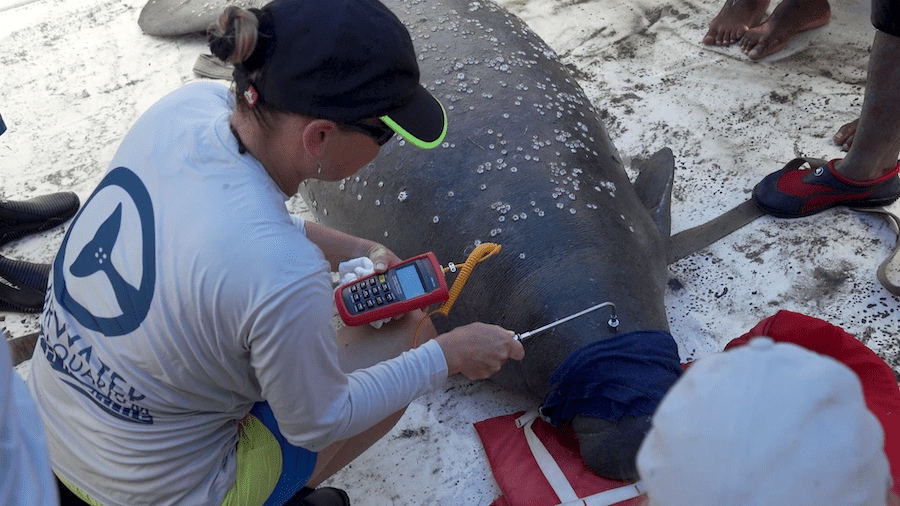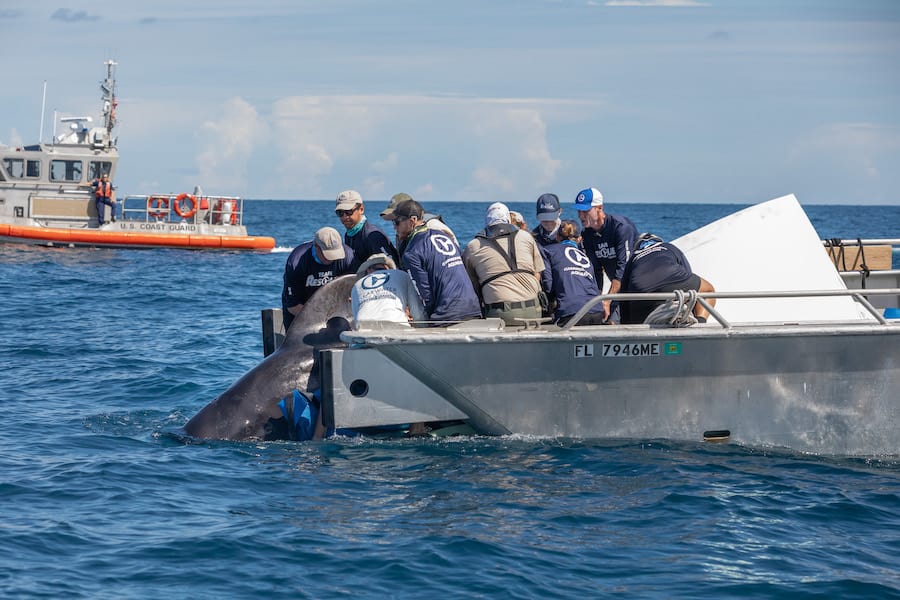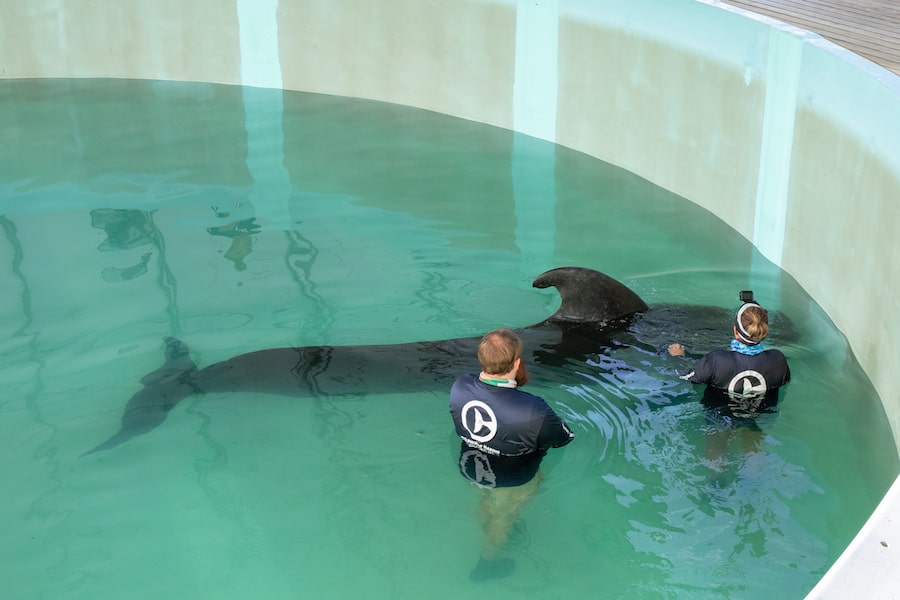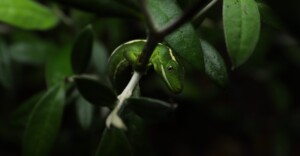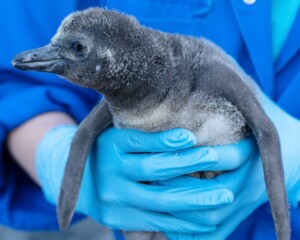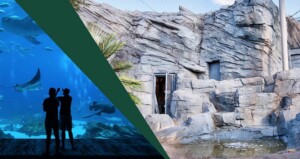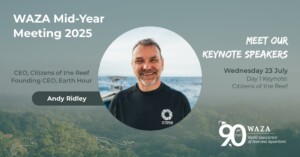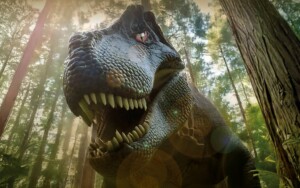
Frank Dame has been CEO of Florida’s Clearwater Marine Aquarium (CMA) since March 2020, when he took over from David Yates. Previously, he had been Chief Operating Officer at the facility since 2008.
Dame, who grew up in the Winter Park area of Orlando, was a finance graduate of the University of Central Florida and initially followed a career in finance.
“My career took me from running a sporting goods store to getting involved in the finance industry,” he tells blooloop. “I worked for International Harvester, General Electric credit., and then GTE Leasing Corporation, where I started out as a salesman and worked my way up to be president of that company.
“When Bell, Atlantic and GTE merged, I became the vice president-general manager of Verizon Credit.”
In 2000, he joined Progress Telecom, a subsidiary of Progress Energy in North Carolina, working as vice president of sales and marketing, until the dotcom crash.
“Progress Telecom merged with Epic Communications in Orlando and then went bankrupt. I decided to retire at that point and started a boat brokerage and yacht service company. Then one of the board members for Clearwater Marine Aquarium, who happened to be a neighbour of mine, contacted me to see if I’d like to be involved with the aquarium. So I started volunteering.”
Change of direction
Frank Dame became a board member of the aquarium in 2006 and was chairman of the board in 2007. Then, in 2008, he was named as the Chief Operating Officer of the Aquarium.
“I had a business background. CMA, like most non-profits, operated based on donations and so on.”
David Yates, who was appointed as CEO at the beginning of 2006 while Dame was still on the board, had been CEO of Iron Man previously, so also had a strong financial background.
“He and I shared a lot of the same sentiments,” says Dame. “Our approach has been to run CMA like a business, rather than a non-profit. To enhance the guest experience, start a good food service, and improve the gift shop. The business model we developed was to let gate revenues drive our coverage of operations, and let donations help us to expand.”
Winter the dolphin
In December 2005, Winter, a two-month-old Atlantic bottlenose dolphin, had been rescued on the East Coast of Florida near Cape Canaveral and brought to CMA. Frank Dame says:
“She had been tangled in a crab trap line, and her tail had been damaged.”
The dolphin lost her tail flukes and two of her vertebrae. As she continued to survive against all odds, a decision was made to fit her with a prosthetic. This was a project undertaken by prosthetist Kevin Carroll.
“David saw an opportunity in Winter’s story. He started promoting it in the media, to shows like Good Morning America, The Today Show, Reader’s Digest and Oprah. Four years later we had a movie contract.”
In 2011, Winter starred in the blockbuster movie, Dolphin Tale, starring Morgan Freeman, Ashley Judd and Harry Connick Jr., co-produced by Yates, and shot partially on location at the aquarium. The future of CMA was assured.
Dame says: “We had been on the verge of bankruptcy in 2006, with an attendance of about 75,000 for a year. In 2010, the year before the movie was released, we had built that attendance up to 220,000.
“In September of 2011, the movie became the number-one box-office hit in its second week, and attendance grew to about 740,000. As the Chief Operating Officer, I was like a deer in headlights trying to help the crowds.”
Dolphin Tale II
“The movie was filmed in 2010. On the last night of filming, the actors were at a wrap party at a restaurant next door to the aquarium,” says Dame.
“At 5 pm, David had got a phone call from a rescue operation asking if we would have room for another baby dolphin. At 11 o’clock that night they brought Hope to us. She was a 55-pound baby dolphin, found nursing her dead mother in the same area Winter had been found.
“Some of the actors partying saw the lights and wandered over to the aquarium. They saw the real-life rescue of Hope, which sparked the idea for the second movie.”
Dolphin Tale II, starring Hope, came out in 2014.
The second movie didn’t have quite the same box-office success as the first. Nevertheless, it drove CMA’s attendance up to 800,000 the following year.
As well as raising revenues for CMA, it spread awareness of conservation issues on a global scale.
“That is our mission,” Dame says: “Our primary responsibility here is the rescue, rehab and release of marine animals and education about environmental research and conservation. One of the challenges we face is that while we are an aquarium in name, we are actually a hospital and education facility.
“We have been ever since 1972 when Clearwater Marine Aquarium was started by a few volunteers.”
Clearwater Marine Aquarium’s rescue mission
In 1986, the City of Clearwater donated the land that the facility is on today. It used to be a water treatment facility in the 50s, so it wasn’t designed as an aquarium. The CEO of that time, marine biologist Dennis Kellenberger, modified the pools and turned it into an educational aquarium.
The fact that the dolphin movies referred to CMA as Clearwater Marine Hospital helped raise awareness of its function.
“We had, in addition to that, education, research and conservation initiatives,” says Dame. “In 2018, we merged with the Sea to Shore Alliance, run by Dr Buddy Powell, who is involved in Manatee research. He’s probably the most renowned manatee researcher in the world. He has also worked with right whales and turtles.”
Dr James “Buddy” Powell, who has a PhD in Zoology from the University of Cambridge in England, joined CMA as VP of Research & Conservation at this point.
The recipient of the prestigious Pew Award in Marine Conservation in 2000, he has been featured on ‘Champions of the Wild’ and National Geographic’sWild Chronicles’ documentaries. He has also been honoured with multiple awards and has authored two books, as well as numerous scientific publications and articles.
The Clearwater Marine Aquarium Research Institute
“In 2018, we formed the Clearwater Marine Aquarium Research Institute, of which Doctor Powell is the executive director,” says Frank Dame.
“We have a great deal of research going on with right whales. These whales used to proliferate, but have been hunted to the point that there are only about 400 in the entire world. We are trying tirelessly to conserve them and make sure that they don’t go extinct.
“The aquarium has a team of people that, each year from December until about the end of March, are out in Georgia, South Carolina, North Carolina and Florida, making aerial observations of these right whales. The whales live up in up in the New England area, but migrate each year to have their offspring.
“On the trip down from New England, the right whales get tangled up in lobster traps and crab trap lines. They also get hit by ships that are coming in from the Atlantic Ocean. Doctor Powell has been able to alter some of the shipping lanes to ensure the safety of the right whales.”
Manatee research
Manatee research is also a priority.
“Manatees don’t necessarily stay in Florida, even though they like the warm water. In the summertime, they go north for a spell. When the cold weather comes, they get trapped. They find power plants that are discharging warm water, and they hang out there.
“When they try to migrate back south, they can’t because the water is too cold. So what we do is to dispatch trucks, and bring them down. We Uber them.”
The CMA Research Institute also works with Antillean manatees in Belize, has one of the only permits for manatee research in Cuba, and will soon also have a presence in the Dominican Republic.
CMA is a popular attraction. “I think a lot of people are very interested in our work,” says Dame. “We are one of the few facilities that actually have dolphins, which are a huge draw.
“The revenues that we generate from admissions help fund our work outside of the aquarium; our research, education and outreach. We have distance learning programs and outreach programs that extend beyond our own county. We are also one of the few facilities that have a permit to take students out on our boat as part of their conservation education.”
Clearwater Marine Aquarium and COVID-19
COVID-19 has had an impact on revenues.
“But our work can’t stop just because of pandemics,” says Dame: “We still rescue animals. We haven’t given up our mission at all. Revenues from admissions stopped; from 16 March through to 15 May 2020 we were shut down. We got no money except that raised in a digital fundraising effort.”
Frank Dame feels that the future is bright for CMA, though making it through the crisis is an ongoing struggle.
“We’ve got new overheads that we’re having to deal with right now and fewer visitors. Even though we reopened in May 2020, it was only to 25% capacity, so our revenues were way down.”
Frank Dame on the new normal
The facility closed at the worst possible time:
“We are dependent on tourism, so our busiest season is from March through the middle of August. Our slowest season is September through February. We would salt away the acorns, so to speak, during our busy period, to carry us through the slower months. We didn’t have that opportunity this year.”
“Our attendance is probably about 54% now of what it was in 2019. But we are fortunate to have that. Many places haven’t made it. We had to lay some people off, and furlough others, though we brought most of them back. I did take out a lot of expense at the senior level. We’re a much flatter organization now than we were, but we were able to survive.”
The facility’s survival is, at least in part, due to Dame’s foresight. He explains:
“I noted right at the very start of the pandemic’s spread that tourism was going to take a big hit. So our marketing team pivoted to start targeting locals and drive-time people. It was very successful.”
Expansion of CMA’s dolphin habitat
Regardless of the pandemic, the facility was able to look towards the future and open an $80 million expansion to its dolphin habitat in July, expanding its footprint on Island Estates.
“The habitat has 1.5 million gallons of water. This means we can double the number of rescued dolphins we can take care of.
“There are five new pools, all interconnected, and nine viewing windows. The largest one is about 40-foot wide by 14-foot tall: a huge viewing area. The dolphins dive down into the viewing windows, and our guests are able to see them up close and personal.”

“We now have about 196 thousand square feet of guest space, in total. In addition, there are 400 new parking spaces at the aquarium.”
While opening a major expansion in the middle of a global health crisis may seem a surprising move, Frank Dame explains:
“The idea is that we have this beautiful facility with so much more space now for social distancing than we had previously. So why not go ahead and open it?”
COST of Wisconsin was contracted to assist in the construction of the new dolphin pool, delivering an engaging naturalistic home with enrichment opportunities. This work included meticulously sculpted artificial rockwork and carved corals.
St. Louis-based PGAV Destinations provided exhibit design, graphic design, and interior design services for the new Ruth & J.O. Stone Dolphin Complex, from concept through construction.
Health and safety at Clearwater Marine Aquarium
Clearwater Marine Aquarium partnered with BayCare, a local health organisation.
“We had them come in and audit the safety procedures and protocols we had implemented. And to endorse what we were doing from a safety standpoint to keep our guests and our employees safe,” says Frank Dame. “I’m pleased to say right now that we have no active cases of COVID within our CMA family.”
“I certainly don’t like to see this current spike in COVID. The political environment in the United States, of course, has not been ideal, when the [former] president had somewhat refused to wear masks, which sets a poor example that some people follow.
“I think, though, the general public itself has, mostly, picked up on that and said, ‘you know what? We’ve got to be responsible ourselves, whether there’s a mandate or not.’
“Most of the people are wearing masks. We require masks to be worn in CMA, we require social distancing and the frequent washing of hands. We are we’re doing everything we can to stay safe, and hope that our guests are, too.
“In looking at the future, I believe that when the vaccine rolls out and this pandemic is behind us, CMA is going to have a tremendously bright future as a community asset, focusing as much on conservation, education and research as we do entertaining guests.”
All images kind courtesy of Clearwater Marine Aquarium



